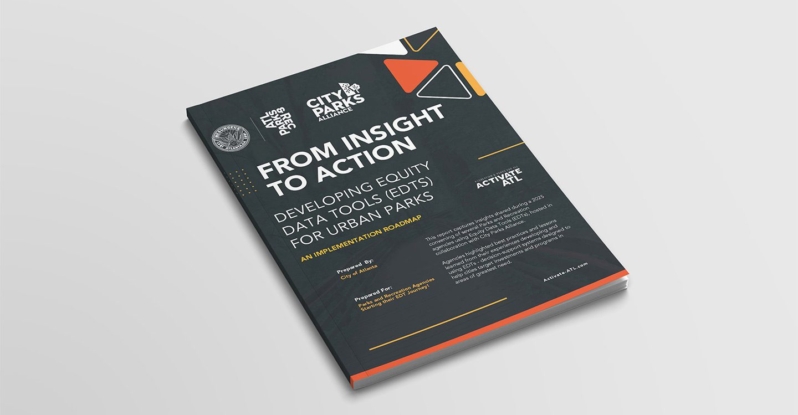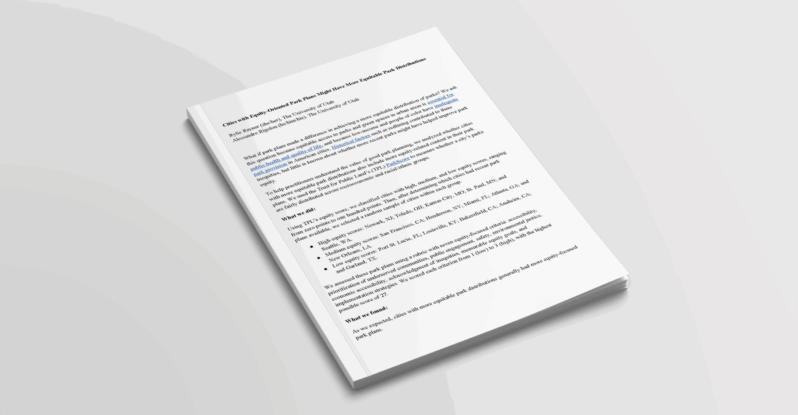Key Findings
- The greenway will facilitate safe travel between neighborhoods via non-motorized forms of transport.
- The greenway will support active living by encouraging pedestrian and biker activity.
- The greenway will promote economic recovery in adjacent flood-damaged neighborhoods.
- Will significantly increase access to park and recreation space for some neighborhoods along the corridor.
Organization description
In partnership with the City of New Orleans, the Friends of Lafitte Corridor (FOLC) seek to create a public greenway along the Lafitte Corridor, a 3.1-mile right-of-way following an old shipping canal and railway that linked the French Quarter and Bayou St. John to the Lakeview Neighborhood. The Lafitte Greenway will connect diverse neighborhoods and support active living by encouraging non-motorized forms of transport. The Greenway is scheduled to be completed in April 2014.
Program description
In partnership with the City of New Orleans, the Friends of the Lafitte Corridor seek to create a greenway along the historic Lafitte Corridor, a transportation right-of-way that follows the path of the late eighteenth-century Carondelet Canal and the Norfolk Southern Rail Line from Basin Street to Canal Boulevard. A number of local partners are involved in the project, including BikeEasy and the Urban Conservancy, as well as the national organization, Rails-to-Trails Conservancy. The completed Lafitte Greenway will link the Treme, Lafitte, Tulane/Gravier, Mid-City, Faubourg St. John, and Lakeview neighborhoods. It will include bicycling and pedestrian paths to encourage active living and non-motorized forms of transport. It will also celebrate the economic and cultural history of the Lafitte Corridor and adjacent neighborhoods.
Program goals/issues addressed
- Facilitate travel between diverse neighborhoods.
- Make non-motorized forms of transport a viable mode of travel along the Lafitte Corridor.
- Support active living by encouraging pedestrian and biker activity.
- Create new open spaces and recreational opportunities for Lafitte Corridor residents.
- Increase public access to and use of city-owned land.
- Promote economic development in adjoining neighborhoods.
- Celebrate New Orleans’ unique history and heritage.
Timeframe (planning/execution)
2011-2014
Funding sources/partnerships and type of support provided
The Lafitte Greenway is mainly being funded by Disaster Recovery Community Development Block Grants approved through the State of Louisiana’s Long Term Community Recovery program. In 2010, the City of New Orleans purchased a 16.5-acre lot in Mid-City, which will be converted into active recreational facilities, for $3.8 million using a Community Development Block Grant.
Results achieved/impact
The design and planning process for the Lafitte Corridor is currently underway. Design Workshop, an Austin, Texas landscape architecture, and urban planning firm is leading the planning process, with community input. The first round of community planning meetings took place in August 2011, with the second set in November 2011. The greenway is scheduled to be completed in April 2014.
Anticipated results
According to pre-Katrina census data, 48.8% of Lafitte Corridor residents are transit-dependent, a percentage more than twice the city’s average. In addition, almost 40% of these individuals have commuting times greater than 30 minutes. This data suggests the strong need for alternate forms of transport for Lafitte Corridor residents, which the Lafitte Greenway will serve. The Lafitte Greenway also will open up new routes to school for children. There are 6 reopened schools within 1/4 mile of the Greenway.
The greenway is also part of the City Park-N.O. Museum of Art and the Lafitte Greenway Cultural Districts, approved by the State of Louisiana in 2008. These Cultural Districts are intended to promote economic growth, by exempting original art sales from both state and local sales and use taxes and providing income and corporate franchise tax credits for rehabilitation expenses associated with owner-occupied or revenue-generating structures.
Contact Information:
Friends of Lafitte Corridor
P. O. Box 791727
New Orleans, LA 70179-1727
Bart Everson
Email: [email protected]



